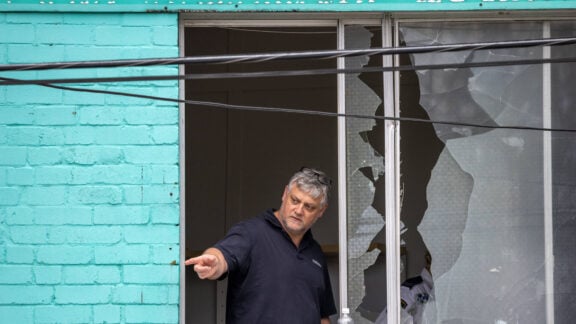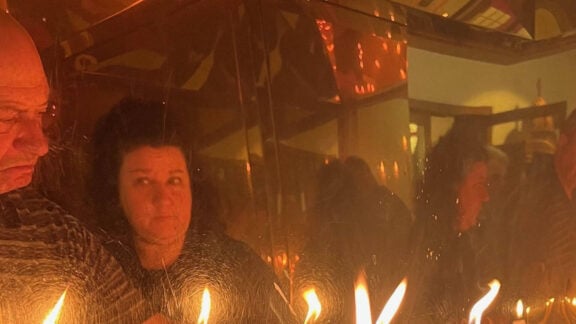Istanbul was Constantinople
Now it’s Istanbul, not Constantinople
Been a long time gone, Constantinople
– “Istanbul (Not Constantinople)”, 1953, The Four Lads
The Fall of Constantinople, on May 29, 1453, to the Ottoman Empire, was a momentous historical event with enduring global consequences. Yet, it has been largely—though not entirely—expunged from modern Western historical narratives.
Constantinople, the citadel of Byzantine cultural, religious, and political power, has been misunderstood in contemporary discourse, despite efforts over the past 30 years to redress the dearth of knowledge among both left and right about the Rome of the East. Commonly known as the Byzantine Empire, it was a syncretic melding of Greek and Roman civilisations under the new creed of Christianity. The ancient Greek city of Byzantium, on the Bosporus in Asia Minor, became the fourth Rome. Within fifty years of its establishment, Latin was overtaken by Greek. Greeks became Romi, or Rum in Turkish.
Crusaders at the City’s gates: The West’s first betrayal
The fall of Constantinople has become a weaponised commemoration—used by right-wing cultural warriors as casus belli for anti-Islamic bigotry. Yet, these new Christian warriors for “the West” forget that it was their own—the Crusaders from the West—who first burned and sacked Constantinople, 200 years before the Ottomans. In fact, the Ottomans didn’t raze the city. The left, for its part, generally mirrors the same ignorance, viewing Byzantium as an atavistic, feudal, theocratic empire of little value.
The Crusade of 1204—after which Constantinople never really recovered—is a good starting point. Historian Jonathan Phillips highlights the “brutality and determination; depravity and avarice; political and religious zeal” of these so-called Christian crusaders. We (we are all Romi) kept them outside the great city walls for months.
The westerners were uncouth, largely illiterate, and extremist Christians —who, once inside the city’s walls, they went berserk—killing, raping, looting. So depraved were they that Pope John Paul II, in 2001, issued a formal apology to the Greek Orthodox Patriarch and Greeks for “the massacre and pillaging of the heart of the Byzantine Empire, beginning in 1204.”
Constantinople ‘the city of the word’s desire’
Let’s go back a bit, to 335 CE. Roman Emperor Constantine built “the city of the world’s desire” atop the ancient Greek trading city of Byzantium. Its location protected it from attack and positioned it as a trade hub between Europe and Asia. Byzantium’s Greek roots go back to 700 BCE. Greeks remained in what is now modern Turkey until 1921.
“Istanbul” is an amalgam of the Greek is tin poli (ΕΙΣ ΤΗΝ ΠΟΛΗ) – “to the city.” The “West” didn’t come to the city’s rescue in 1453. As many Greeks say, “Better the Turkish turban than the Papal tiara.”
Three days after Mehmed the Conqueror took Constantinople, he ordered his men to stop looting, slaughtering, and raping. He issued a proclamation allowing Greeks to return to their homes, to be treated with respect and maintain their previous status. Agia Sophia, the daunting 1,480-year-old cathedral where emperors were crowned, was converted into an imperial mosque. It served as the jewel of Ottoman rule for five centuries and still stands in awe.
The late John Julius Norwich—possibly the greatest modern scholar of Byzantine and Ottoman history—writes that the Ottomans “considered themselves destined to rule a great empire.” They were “demons at war and angels at peace—equally heroic and humane.”
To the Franks, Britons, Germans (the late-comers to civilisation and Christianity) the so called Europeans, the Byzantines were Eastern— “oriental,” conspiratorial, hedonistic. But commerce, economy, senatorial politics, philosophy, faith, luxury, music and art, food and wine, sex (tied to Greco-Roman pagan times), and bling—these were our Byzantine domains. We avoided war when we could—through alliances, marriages, and payoffs. We even created the first stock market, using purple silk as a measure of value.
Theodora: The slut-shamed Empress a global architect
Theodora, Justinian’s wife (c. 500–548)—Greek, born in Syria (we think), raised in Cyprus—began life as a child dancer in her father’s touring circus. Yet, she rose to become an imposing empress in her own right, helping her husband Justinian codify Byzantine law—Justinian’s Code—guaranteeing fair treatment for all citizens regardless of faith or culture. She also helped him crush a rebellion by killing 30,000 of its supporters. The clergy hated her. She was slut-shamed, accused of orgies with men and women. I like her.
Constans II (c. 641–668)—known to the Chinese as Boduoli (波多力), or Constantine the Bearded—was the first to set up an embassy at the Tang Dynasty court in 643 under Emperor Taizong. Business is business.
Our peers were in the East—Asia, the Middle East, Africa—not aspirational Franks and Saxons. Of course, dysfunctional families being what they are, our cousins in the West—the rising mercantile power of the Venetians—paid the still hardly civilised Crusaders from Europe to raze and loot Constantinople in 1204. Our big family bust-up with the Italians came when Pope Leo III crowned Charlemagne, King of the Franks, as Holy Roman Emperor in 800.
Between 378 and 718, Constantinople withstood more sieges than any city of its time—from Goths, Huns, Persians, Arabs, Russians, and others. Relations with the West rapidly deteriorated. In 1054, the Greek Orthodox Church severed all ties with Rome and the Catholic Church—from the Pope to the Emperor. They could no longer hang with us.
Byzantium is part of our Hellenic as well as global cultural heritage. Byzantine music shaped Eastern and Western canons. Our iconography influenced Hindu and Muslim art. After the fall, our business and creative classes fled to Europe and sparked the Renaissance. Some found refuge in Caliphates, or courts in China and India. Many stayed and administered the Ottoman Empire, which inherited and adapted our structures and systems. We – Greeks, Armenians, Assyrians, Jews – ran the admin while the Ottomans expanded into the Middle East and Europe—right up to the gates of Vienna.
Modernity and nation-building blood sacrifices
The wars between Revolutionary Greece began in 1821 and the Ottoman Empire finally ended in 192. The catastrophic Greco-Turkish War of 1922 began when Greeks deluded themselves into taking back Constantinople from what was a collapsing Ottoman Empire. The result was the real end of thousands of years of Hellenic life in what was to become the Republic of Turkey. The real end of the Byzantium.
Over two million Greeks were expelled, hundreds of thousands died on forced marches, and as Turkish paramilitaries pursued ethnic cleansing. Equally, ‘modernising’ Greeks inflicted similar horrors on 500,000 Turks living in Greece. The so called, “Population Exchange” was only outdone in horror, just, by the mass transfer of Hindus and Muslims during Partition in 1947.
So—Constantinople, by any other name… the rest is history.








